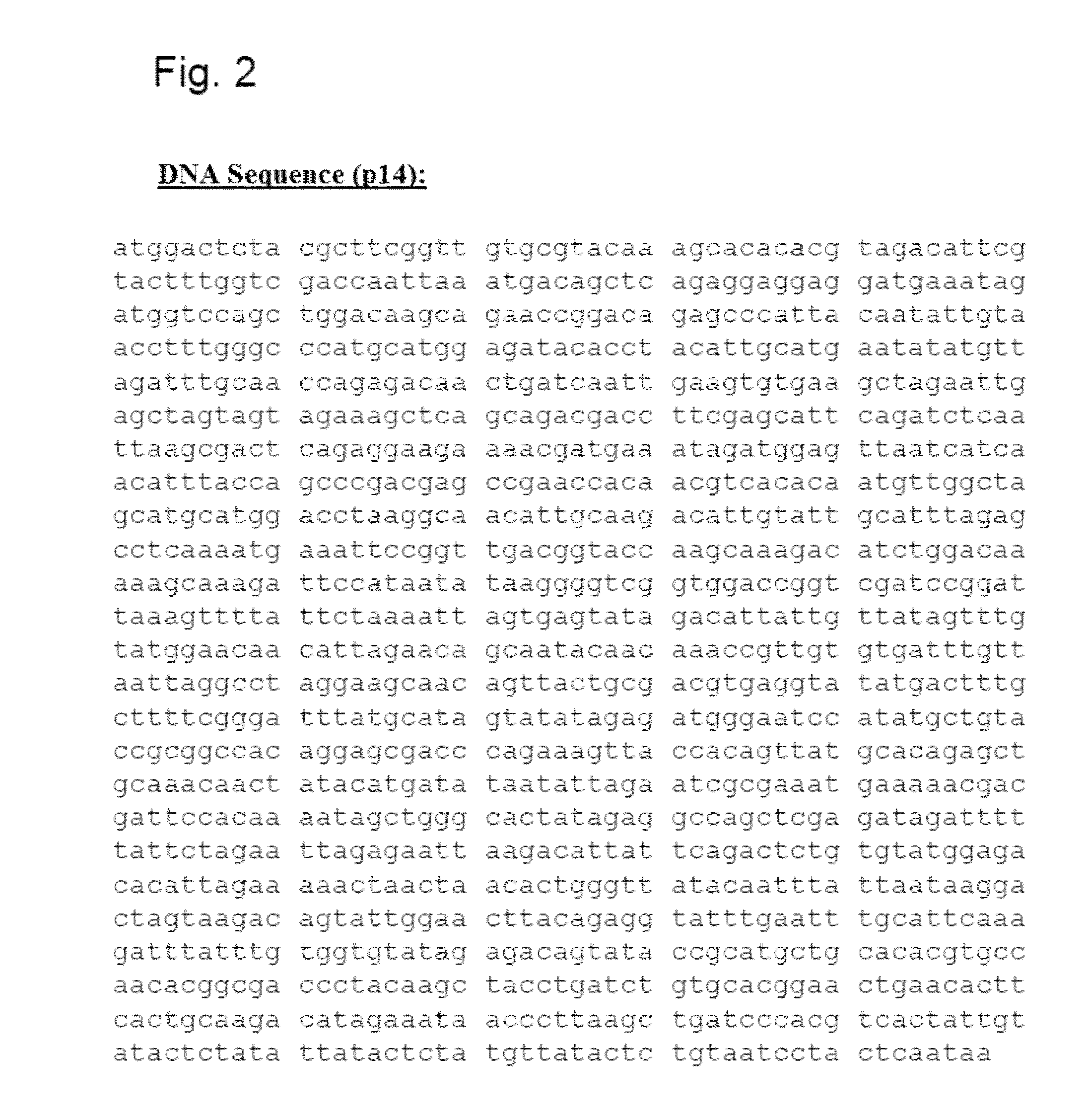Agent for use in the topical or local treatment of cervical dysplasias
a technology for cervical dysplasia and agents, applied in the field of agents for use in the topical or local treatment of cervical dysplasia, can solve the problems of no therapeutic alternative to surgical removal, no vaccine no longer has any effect, and increase the risk of premature birth, etc., and achieve the effect of increasing the expression of the vaccination gen
- Summary
- Abstract
- Description
- Claims
- Application Information
AI Technical Summary
Benefits of technology
Problems solved by technology
Method used
Image
Examples
Embodiment Construction
“Cloning of a recombinant therapeutic vaccination gene without transformation associated peptide motifs”) as well as in Hoffmann et al. (J. Immunother 2010; 33: 136-145). Reference is made thereto and to the entire disclosure of WO 2009 / 106362 A1 and Hoffmann et al. (J. Immunother 2010; 33: 136-145) and this is incorporated into the present application as reference in their entirety.
[0039]The recombinant vaccination gene (p14) described there is characterized in that all potentially pathogenic and transforming sequence sections have been eliminated. An analysis of the T cell epitope still coded in the recombinant vaccination gene p14 (based on the 4 most frequent MCH-1 molecules in the Caucasian population) shows that despite the elimination of all potentially pathogenic and transforming sequence sections, almost 70% of the high-affinity T cell epitopes are still coded by the vaccination gene. Furthermore, with respect to the recombinant vaccination gene (p14) by means of transforma...
PUM
| Property | Measurement | Unit |
|---|---|---|
| length | aaaaa | aaaaa |
| total length | aaaaa | aaaaa |
| strength | aaaaa | aaaaa |
Abstract
Description
Claims
Application Information
 Login to View More
Login to View More - R&D
- Intellectual Property
- Life Sciences
- Materials
- Tech Scout
- Unparalleled Data Quality
- Higher Quality Content
- 60% Fewer Hallucinations
Browse by: Latest US Patents, China's latest patents, Technical Efficacy Thesaurus, Application Domain, Technology Topic, Popular Technical Reports.
© 2025 PatSnap. All rights reserved.Legal|Privacy policy|Modern Slavery Act Transparency Statement|Sitemap|About US| Contact US: help@patsnap.com



